Caryn
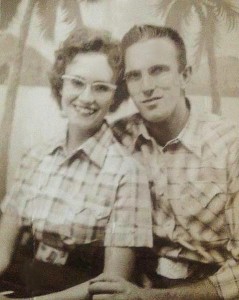 The name Bonnie comes from the Scottish word “bonnie” meaning pretty or attractive, which was itself derived from Middle French bonne “good” as a way to describe a fair, good, and beautiful girl. I think that is what my grandparents had in mind when they named my aunt Bonnie Beth Byer, who is now Bonnie McDaniels. I think her husband, Jack McDaniels agreed with that description, because from the first time he laid eyes on Aunt Bonnie, his heart decided to do a dance. Now, no one told me that, but I could see it every time he looked at her. He was so in love with her, and he always knew that she was his bonnie Bonnie…or as the meaning goes, his beautiful Bonnie.
The name Bonnie comes from the Scottish word “bonnie” meaning pretty or attractive, which was itself derived from Middle French bonne “good” as a way to describe a fair, good, and beautiful girl. I think that is what my grandparents had in mind when they named my aunt Bonnie Beth Byer, who is now Bonnie McDaniels. I think her husband, Jack McDaniels agreed with that description, because from the first time he laid eyes on Aunt Bonnie, his heart decided to do a dance. Now, no one told me that, but I could see it every time he looked at her. He was so in love with her, and he always knew that she was his bonnie Bonnie…or as the meaning goes, his beautiful Bonnie.
Aunt Bonnie is indeed a beautiful woman, inside and out…and she used to make  bonnie cakes before she retired from that. The weddings that her cakes graced are among the most beautiful ever seen. No professional could have bested her in my opinion. There is a beauty that comes from making something with love. Her cakes had the physical beauty, but the love beauty was truly the icing on the cake. There is just something about someone with a great talent, who thinks more about other people that she does herself. That’s just how Aunt Bonnie is, so thoughtful, kind, and caring.
bonnie cakes before she retired from that. The weddings that her cakes graced are among the most beautiful ever seen. No professional could have bested her in my opinion. There is a beauty that comes from making something with love. Her cakes had the physical beauty, but the love beauty was truly the icing on the cake. There is just something about someone with a great talent, who thinks more about other people that she does herself. That’s just how Aunt Bonnie is, so thoughtful, kind, and caring.
Aunt Bonnie and Uncle Jack have always had a lovely place out in the country. It is normally so quiet and peaceful, but there have been a few exciting moments, one of which was the time the bridge burned, when  someone set of fireworks on the old wooden bridge that was the only easy way out of their place. The alternate access road was miles out of the way for Aunt Bonnie. For a time, the county had talked about not rebuilding the bridge, but finally they decided to do so. I’m thankful, because if another fire went through the area, it would be difficult for her to escape…and that had me worried. I love my aunt and I want her to be safe. I’m sure that was not the first trial Aunt Bonnie had while living in the country, and probably won’t be the last either. Nevertheless, she takes it all in stride, because she is a strong woman, as well as a bonnie beautiful one. Today is Aunt Bonnie’s birthday. Happy birthday Aunt Bonnie!! Have a great day!! We love you!!
someone set of fireworks on the old wooden bridge that was the only easy way out of their place. The alternate access road was miles out of the way for Aunt Bonnie. For a time, the county had talked about not rebuilding the bridge, but finally they decided to do so. I’m thankful, because if another fire went through the area, it would be difficult for her to escape…and that had me worried. I love my aunt and I want her to be safe. I’m sure that was not the first trial Aunt Bonnie had while living in the country, and probably won’t be the last either. Nevertheless, she takes it all in stride, because she is a strong woman, as well as a bonnie beautiful one. Today is Aunt Bonnie’s birthday. Happy birthday Aunt Bonnie!! Have a great day!! We love you!!
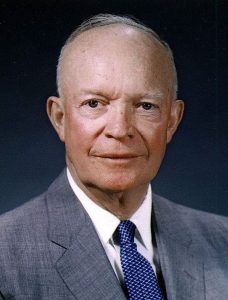 Recently, I found out that President Dwight D Eisenhower is my sixth cousin six times removed. We are connected on my mother’s side through her Pattan roots, which is her mother’s side. Eisenhower was the 34th president of the Unites States, serving from January 20, 1953 to January 20, 1961. He was also a five-star general in the United States Army during World War II and served as Supreme Commander of the Allied Expeditionary Forces in Europe. Eisenhower was responsible for planning and supervising the invasion of North Africa in Operation Torch in 1942 – 1943 and the successful invasion of France and Germany in 1944 – 1945 from the Western Front. In 1951, he became the first Supreme Commander of NATO.
Recently, I found out that President Dwight D Eisenhower is my sixth cousin six times removed. We are connected on my mother’s side through her Pattan roots, which is her mother’s side. Eisenhower was the 34th president of the Unites States, serving from January 20, 1953 to January 20, 1961. He was also a five-star general in the United States Army during World War II and served as Supreme Commander of the Allied Expeditionary Forces in Europe. Eisenhower was responsible for planning and supervising the invasion of North Africa in Operation Torch in 1942 – 1943 and the successful invasion of France and Germany in 1944 – 1945 from the Western Front. In 1951, he became the first Supreme Commander of NATO.
With everything else that he did, it seems odd, I suppose, to mention the fact that on March 18, 1959, he signed the Admission Act. Basically, the act dissolved the Territory of Hawaii and established the State of Hawaii as the 50th state to be admitted into the Union. Statehood became effective on August 21, 1959…the last state to join the United States. Eisenhower, in fact, was the president who signed the last two states into the United States. To me that must have been such an awe inspiring thing to get to do. My guess is that Eisenhower really had no idea that Hawaii would forever be the last state in the United States, and I suppose that it is still possible that  another may join, but it has been almost 58 years, so it seems highly unlikely that there will be another. I wonder if, as his life was drawing to a close, Eisenhower gave any thought to the fact that he got to do that…to bring in the final two states in the United States. I also wonder if anyone thought there would ever be more states after Arizona and New Mexico were added in 1912, almost 47 years earlier. Maybe, adding another state to our country didn’t seem like such an important thing for a president to do, but I think it is. And to be the president to add the last two states…well, I just think that is very cool.
another may join, but it has been almost 58 years, so it seems highly unlikely that there will be another. I wonder if, as his life was drawing to a close, Eisenhower gave any thought to the fact that he got to do that…to bring in the final two states in the United States. I also wonder if anyone thought there would ever be more states after Arizona and New Mexico were added in 1912, almost 47 years earlier. Maybe, adding another state to our country didn’t seem like such an important thing for a president to do, but I think it is. And to be the president to add the last two states…well, I just think that is very cool.
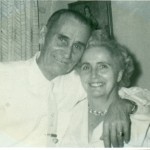 Like many avid genealogists, I find myself looking at my roots often. As Saint Patrick’s Day rolls around, I find myself contemplating my Irish roots. I’m sure there are more than I can begin to count, but I specifically know of the Shaw family. These are my grandmother, Harriett Byer’s ancestors. The thing that I find to be sad is that the records are not as extensive as I wish they were. My DNA connects me to this family, but the 1600s is as far as I have been able to trace. I suppose that many people would think that the 1600s is a long way back, but it is barely to the point of their immigration from Ireland to the United States. Even in America, the records aren’t well kept. I find it quite sad that some families are so meticulous in their record keeping, while others just weren’t.
Like many avid genealogists, I find myself looking at my roots often. As Saint Patrick’s Day rolls around, I find myself contemplating my Irish roots. I’m sure there are more than I can begin to count, but I specifically know of the Shaw family. These are my grandmother, Harriett Byer’s ancestors. The thing that I find to be sad is that the records are not as extensive as I wish they were. My DNA connects me to this family, but the 1600s is as far as I have been able to trace. I suppose that many people would think that the 1600s is a long way back, but it is barely to the point of their immigration from Ireland to the United States. Even in America, the records aren’t well kept. I find it quite sad that some families are so meticulous in their record keeping, while others just weren’t.
My Grandma Byer and her siblings were proud of their Irish roots. In their later years, they took a trip to Ireland to search for family information, graves, and living family members. I’m not sure if they found much 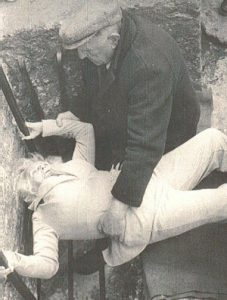 information, but without computers, information was harder to find then. It’s not that computers didn’t exist, but rather the simple fact that none of them knew how to use one. Nevertheless, they had a wonderful trip. They explored castles, town and villages, and they saw the amazing green fields that are synonymous of Ireland. They also did something that I have found interesting, when the had the opportunity to kiss the Blarney Stone. For those who don’t know about the Blarney Stone, “The Blarney Stone (Irish: Cloch na Blarnan) is a block of Carboniferous limestone built into the battlements of Blarney Castle, Blarney, about 8 kilometers (5 miles) from Cork, Ireland. According to legend, kissing the stone endows the kisser with the gift of the gab (great eloquence or skill at flattery).” It’s really just a goofy tradition, but I suppose it is a fun idea, and one they decided was worth testing.
information, but without computers, information was harder to find then. It’s not that computers didn’t exist, but rather the simple fact that none of them knew how to use one. Nevertheless, they had a wonderful trip. They explored castles, town and villages, and they saw the amazing green fields that are synonymous of Ireland. They also did something that I have found interesting, when the had the opportunity to kiss the Blarney Stone. For those who don’t know about the Blarney Stone, “The Blarney Stone (Irish: Cloch na Blarnan) is a block of Carboniferous limestone built into the battlements of Blarney Castle, Blarney, about 8 kilometers (5 miles) from Cork, Ireland. According to legend, kissing the stone endows the kisser with the gift of the gab (great eloquence or skill at flattery).” It’s really just a goofy tradition, but I suppose it is a fun idea, and one they decided was worth testing.
The big Saint Patrick’s Day parties are far more an American tradition than it is as Irish one. In fact, people might be surprised at the real background of the day. Saint Patrick’s Day was made an official Christian feast day in the early 17th century and is observed by the Catholic Church, the Anglican Communion (especially the Church of Ireland), the Eastern Orthodox Church, and the Lutheran Church. In reality, It is a day that  commemorates Saint Patrick and the arrival of Christianity in Ireland. It also celebrates the heritage and culture of the Irish in general. Celebrations generally involve public parades and festivals, cèilidhs (a social event at which there is Scottish or Irish folk music and singing, traditional dancing, and storytelling), and the wearing of green attire or shamrocks. Some Catholic Christians also attend church services and historically in Ireland the Lenten restrictions on eating and drinking alcohol were lifted for the day, which is likely where the holiday’s tradition of alcohol consumption came from. So, whether you celebrate in the tradition of America or the tradition of Ireland, Happy Saint Patrick’s Day to one and all.
commemorates Saint Patrick and the arrival of Christianity in Ireland. It also celebrates the heritage and culture of the Irish in general. Celebrations generally involve public parades and festivals, cèilidhs (a social event at which there is Scottish or Irish folk music and singing, traditional dancing, and storytelling), and the wearing of green attire or shamrocks. Some Catholic Christians also attend church services and historically in Ireland the Lenten restrictions on eating and drinking alcohol were lifted for the day, which is likely where the holiday’s tradition of alcohol consumption came from. So, whether you celebrate in the tradition of America or the tradition of Ireland, Happy Saint Patrick’s Day to one and all.
 For my nephew, Eric Parmely, married life has mostly been about being outnumbered by girls…at least since he and his wife, Ashley started having children. Don’t get me wrong here…Eric wanted girls. He came from a family with three boys, and he was the youngest. He had always wanted to have a daughter, and really never expected to have one. Let’s face it, in a family of all boys, having a girl is highly unlikely. Nevertheless, Eric and Ashley beat the odds and had not only one daughter, Reagan, but were blessed with a second daughter, Hattie.
For my nephew, Eric Parmely, married life has mostly been about being outnumbered by girls…at least since he and his wife, Ashley started having children. Don’t get me wrong here…Eric wanted girls. He came from a family with three boys, and he was the youngest. He had always wanted to have a daughter, and really never expected to have one. Let’s face it, in a family of all boys, having a girl is highly unlikely. Nevertheless, Eric and Ashley beat the odds and had not only one daughter, Reagan, but were blessed with a second daughter, Hattie.
Eric and Ashley had purchased a house in the country, next door to her parents. They wanted the country life, and with her parents horses, they knew that they would be able to give their children the kind of life they wanted for them. Living in the country and having animals, is something they are all interested in. The girls don’t care that farming and caring for animals is a “dirty” job, because they love their animals. They get right out there and help their Daddy and Mommy with whatever they are doing on the farm.

Eric’s life is full and happy, but now…if it is possible, his life is going to get even more full. They are now expecting a little boy to join their family in the near future. While Eric and now his little boy will still be outnumbered by the girls in the family, they can at least say that they have each other when outnumbering becomes an issue. Although, when in coms to getting into the bathroom when teenaged girls are in there…all bets are off. It’s going to be fun to watch the transition from all girls to a boy in the family, and I know that they many stages that are to come will be lots of fun for both Eric and Ashley. And after all, it’s all about building a life. Today is Eric’s birthday. Happy birthday Eric!! Have a great day!! We love you!!
 My niece, Kellie Hadlock is like her mother in so many ways. She is that “good” child, who doesn’t get in trouble, and can always be found with a smile on her face. Kellie can’t help but smile. It isn’t that no trouble passes by her. It’s just that Kellie chooses not to participate in the troubles of this world. There are probably a number of things that Kellie chooses not to participate in, but those really aren’t the important things. It’s the things Kellie chooses to participate in that really matter, because it is those things that define the wonderful woman Kellie is.
My niece, Kellie Hadlock is like her mother in so many ways. She is that “good” child, who doesn’t get in trouble, and can always be found with a smile on her face. Kellie can’t help but smile. It isn’t that no trouble passes by her. It’s just that Kellie chooses not to participate in the troubles of this world. There are probably a number of things that Kellie chooses not to participate in, but those really aren’t the important things. It’s the things Kellie chooses to participate in that really matter, because it is those things that define the wonderful woman Kellie is.
As a child, Kellie brought happiness and sunshine into a room with her every time she entered. She was always giggly and happy. Her laugh simply could not be ignored, because it was contagious. She laughed and you had to laugh, because she drew you into her unique sense of humor with every giggle. Her laugh expressed so much glee,  that you couldn’t help but giggle right along with her. The reality is that little Kellie didn’t have a serious bone in her body, and I’m not so sure she does now. It’s not that she can’t be serious if she tries hard enough, but Kellie just chooses to take life with a big dose of laughter…and that hasn’t changed to this day. Still, no matter how funny and giggly Kellie was, there was one other bone missing from her body…the mean one. She couldn’t be mean to anyone if she tried. And believe me, Kellie doesn’t try to be mean, any more than she tries to be serious.
that you couldn’t help but giggle right along with her. The reality is that little Kellie didn’t have a serious bone in her body, and I’m not so sure she does now. It’s not that she can’t be serious if she tries hard enough, but Kellie just chooses to take life with a big dose of laughter…and that hasn’t changed to this day. Still, no matter how funny and giggly Kellie was, there was one other bone missing from her body…the mean one. She couldn’t be mean to anyone if she tried. And believe me, Kellie doesn’t try to be mean, any more than she tries to be serious.
Kellie has a beautiful God given gift, in addition to her laughter…her singing voice. Kellie loves to sing, and even records her songs and puts them on YouTube. If you haven’t had the opportunity to listen to her sing, I highly  recommend that you check it out. She plays the piano as well, and the music she creates is amazing. While Kellie is an insurance agent, her true calling is music ministry, and I can tell you that she definitely ministers to people through her music. When Kellie performs solos at our church, her message can move you to tears…not because the music is sad, but because it is so totally and completely beautiful. Kellie sings from her heart, and she has a heart for God. Her sweet spirit and her love of God show in every word she sings, every word she speaks, and even in her social media posts. What an awesome woman of God she is. Today is Kellie’s birthday. Happy birthday Kellie!! Have a great day!! We love you!!
recommend that you check it out. She plays the piano as well, and the music she creates is amazing. While Kellie is an insurance agent, her true calling is music ministry, and I can tell you that she definitely ministers to people through her music. When Kellie performs solos at our church, her message can move you to tears…not because the music is sad, but because it is so totally and completely beautiful. Kellie sings from her heart, and she has a heart for God. Her sweet spirit and her love of God show in every word she sings, every word she speaks, and even in her social media posts. What an awesome woman of God she is. Today is Kellie’s birthday. Happy birthday Kellie!! Have a great day!! We love you!!
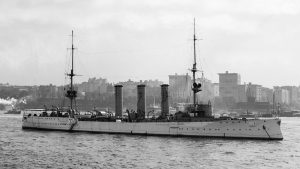 In any war, there are certain weapons, ships, planes, or vehicles that are somewhat, if not totally, feared by the enemy, and World War I was no exception. The Germans has a couple of light cruisers, the Dresden and the Emden. These cruisers were the fastest ships in the German Imperial Navy, capable of traveling at speeds of up to 24.5 knots. They weighed in at 3,600 tons, and they were two of the first German ships to be built with modern steam-turbine engines. The British actually had faster ships, but the Dresden had managed to avoid them…until March 14, 1915, that is. The Dresden was put in service in 1909, and kept very busy. Between August 1, 1914 and March 1915 the Dresden traveled over 21,000 miles.
In any war, there are certain weapons, ships, planes, or vehicles that are somewhat, if not totally, feared by the enemy, and World War I was no exception. The Germans has a couple of light cruisers, the Dresden and the Emden. These cruisers were the fastest ships in the German Imperial Navy, capable of traveling at speeds of up to 24.5 knots. They weighed in at 3,600 tons, and they were two of the first German ships to be built with modern steam-turbine engines. The British actually had faster ships, but the Dresden had managed to avoid them…until March 14, 1915, that is. The Dresden was put in service in 1909, and kept very busy. Between August 1, 1914 and March 1915 the Dresden traveled over 21,000 miles.
In the summer of 1914, the Dresden was patrolling the Caribbean Sea. Its assignment was to safeguard German investments and German citizens living abroad in the region. Then, on July 20, during a bitter civil war in Mexico, the Dresden was called upon to give safe passage to Mexican president, Victoriano Huerta, by transporting him and his family as they escaped to Jamaica, where they received asylum from the British government. Then came news from Europe of Austria’s ultimatum to Serbia and the imminent possibility of war. The German’s put the fleet on alert. By the first week of August the nations of Europe were at war. The Dresden was sent to South America to attack British shipping interests there, and it sunk several merchant ships as it traveled to Cape Horn, at the southern tip of Chile. The Dresden eluded the British naval squadron in  the region, commanded by Rear Admiral Sir Christopher Cradock. In October, the ship joined Admiral Maximilian von Spee’s German East Asia Squadron at Easter Island in the South Pacific. On November 1, Spee’s squadron, including Dresden, scored a crushing victory over the British in the Battle of Coronel, sinking two cruisers with all hands aboard, including Cradock, who went down with his flagship, Good Hope.
the region, commanded by Rear Admiral Sir Christopher Cradock. In October, the ship joined Admiral Maximilian von Spee’s German East Asia Squadron at Easter Island in the South Pacific. On November 1, Spee’s squadron, including Dresden, scored a crushing victory over the British in the Battle of Coronel, sinking two cruisers with all hands aboard, including Cradock, who went down with his flagship, Good Hope.
Just five weeks later, the Dresden was the only German ship to escape destruction at the Battle of the Falkland Islands on November 8, when the British light cruisers Inflexible and Invincible, commanded by Sir Doveton Sturdee, sank four of von Spee’s ships. Lost were Scharnhorst, Gneisenau, Leipzig and Nurnberg. As a crew member of Dresden wrote later of watching one of the other ships sink, “Each one of us knew he would never see his comrades again, no one on board the cruiser can have had any illusions about his fate.” Then the Dresden escaped under cover of bad weather south of the Falkland Islands.
Dresden consistently avoided capture by the British navy over the next several months, while sinking a number of cargo ships and then seeking refuge in the network of channels and bays in southern Chile. In need of repairs, the Dresden put into an island off the Chilean coast, in Cumberland Bay on March 8th. Captain, Fritz Emil von Luedecke, had decided the repairs were necessary in the wake of such heavy and extended use. Captain von Luedecke sent out many messages asking for fuel in the hopes of reaching any passing coal ships in the area, but the messages were picked up the British ships, Kent and Glasgow six days later. After a  hurried search, Kent and Glasgow found Dresden. When Kent opened fire, Dresden sent a few shots back, but soon raised the white flag of surrender. They knew they had no chance against the Kent in their current condition. A German representative negotiated a truce with the British sailors to stall for time, and von Luedecke ordered his crew to abandon the ship and scuttle it. Dresden sank slowly at first, then sharply listed to the side. Amid cheers from both the British on board their two ships and the German sailors that had escaped onto land, Dresden disappeared beneath the water, its German ensign flag flying. It was a sad ending to the five year, 21,000-mile career of one of Germany’s most famous World War I commerce-raiding ships.
hurried search, Kent and Glasgow found Dresden. When Kent opened fire, Dresden sent a few shots back, but soon raised the white flag of surrender. They knew they had no chance against the Kent in their current condition. A German representative negotiated a truce with the British sailors to stall for time, and von Luedecke ordered his crew to abandon the ship and scuttle it. Dresden sank slowly at first, then sharply listed to the side. Amid cheers from both the British on board their two ships and the German sailors that had escaped onto land, Dresden disappeared beneath the water, its German ensign flag flying. It was a sad ending to the five year, 21,000-mile career of one of Germany’s most famous World War I commerce-raiding ships.
 Whether you like the bi-annual time change that most states use or not, it is a fact of life for most of the citizens of the United States. Most of us have no problem with the “Fall back” part of the change, because with it comes an extra hour of sleep, and in the winter months, who can’t use that. The “Spring forward” part of the time change…well, that is a different thing. Losing that hour of sleep is just not so easy to swallow. Enter Napping Day.
Whether you like the bi-annual time change that most states use or not, it is a fact of life for most of the citizens of the United States. Most of us have no problem with the “Fall back” part of the change, because with it comes an extra hour of sleep, and in the winter months, who can’t use that. The “Spring forward” part of the time change…well, that is a different thing. Losing that hour of sleep is just not so easy to swallow. Enter Napping Day.
In days gone by, an afternoon nap was not just a common thing, it was part of the job description. In fact, the siesta is still a time-honored tradition in Spain. It happens right after lunch and can be traced back to the first years of people having jobs. In fact, if you’re in the Mediterranean, it’s pretty much standard everywhere you go. In Italy they call it the riposo, pisolini, and even old Charlamagne, who was a medieval emperor who ruled much of Western Europe from 768 to 814, has been recorded as having taken 2-3 hour naps in the middle of the afternoon. I want to know where that tradition has gone in our time. I can’t tell you how many times I would have loved to grab a little twenty minute nap in the afternoon.
Fast forward to our time. Daylight savings time rolls around, and you are forced to get up an hour earlier. Most of us couldn’t fall asleep any earlier, and after all, the time change happens at about 2:00am, so why would we go to bed an hour early. The next morning is Sunday, and hopefully you were able to get acclimated to the new time, but more likely than not, you didn’t. So on Monday you are back at it…hard at work, and suddenly you hit a wall. You’ve been a trooper all day. You bravely made it through the morning’s activities…and it wasn’t too  bad. Then lunch hits, and that food just makes you sleepy. What do you do? You take a nap! Napping Day encourages you to remember these benefits of youth and take a little time out of the day for you! The idea is to take that little nap, because it really is napping day. I have to wonder just how many bosses would be ok with such an idea. Not too many, I would guess.
bad. Then lunch hits, and that food just makes you sleepy. What do you do? You take a nap! Napping Day encourages you to remember these benefits of youth and take a little time out of the day for you! The idea is to take that little nap, because it really is napping day. I have to wonder just how many bosses would be ok with such an idea. Not too many, I would guess.
As Barbara Jordan, a Texas representative, would say, “Think what a better world it would be if we all, the whole world, had cookies and milk about three o’clock every afternoon and then lay down on our blankets for a nap.” I hadn’t heard of her before, but I like her style. Happy Napping Day everyone!!
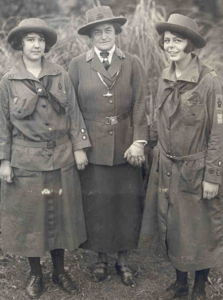 As a girl, I like many other girls became a Girl Scout. It was a group of girls having fun, while learning things and earning badges. The group was founded on March 12, 1912, and turns 105 years old today. The organization, called Girl Scouts, was founded in Savannah, Georgia by a woman named Juliette Gordon Low. She was born in 1860, and became a widow in 1905. She needed something…a cause. She had suffered through a bad marriage to a man who cheated on her and left most of his estate to his mistress. She wanted to help young women become self-sufficient…a cause borne out of her own experiences of feeling defined by the era’s roles for women, so she came up with the idea of a group that would teach young women about their worth and abilities. She first worked with a Scottish organization called Girl Guides and then founded the first American branch of the group in 1912, but she decided to break away and further develop her young women’s scouting association on her own. She soon changed the organization’s name to the Girl Scouts, and became the organization’s first president.
As a girl, I like many other girls became a Girl Scout. It was a group of girls having fun, while learning things and earning badges. The group was founded on March 12, 1912, and turns 105 years old today. The organization, called Girl Scouts, was founded in Savannah, Georgia by a woman named Juliette Gordon Low. She was born in 1860, and became a widow in 1905. She needed something…a cause. She had suffered through a bad marriage to a man who cheated on her and left most of his estate to his mistress. She wanted to help young women become self-sufficient…a cause borne out of her own experiences of feeling defined by the era’s roles for women, so she came up with the idea of a group that would teach young women about their worth and abilities. She first worked with a Scottish organization called Girl Guides and then founded the first American branch of the group in 1912, but she decided to break away and further develop her young women’s scouting association on her own. She soon changed the organization’s name to the Girl Scouts, and became the organization’s first president.
Low hoped to give her girls the opportunity to grow physically, mentally, emotionally, and even spiritually, Low 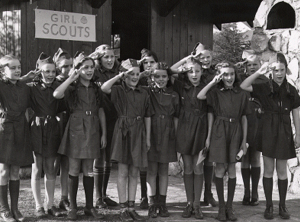 started the organization with just 18 girls in attendance at that first meeting. Low was an athlete, as well as an art lover. Her dream was to teach the girls that they could do anything. She wanted her girls to find out that they could help out in so many ways, and she definitely proved that. The Girl Scouts of America were very involved with the war effort back home during both World War I and World War II. They sold war bonds, collected peach pits for gas masks…peach pits were used as filters, worked in hospitals, and provided hands-on support to the country and the troops. Then, during the 1930s, when the Great Depression hit, the Girl Scouts again stepped up to the plate, collecting clothing and canned goods for the poor, making them quilts, providing meals for impoverished children, and helping out at hospitals.
started the organization with just 18 girls in attendance at that first meeting. Low was an athlete, as well as an art lover. Her dream was to teach the girls that they could do anything. She wanted her girls to find out that they could help out in so many ways, and she definitely proved that. The Girl Scouts of America were very involved with the war effort back home during both World War I and World War II. They sold war bonds, collected peach pits for gas masks…peach pits were used as filters, worked in hospitals, and provided hands-on support to the country and the troops. Then, during the 1930s, when the Great Depression hit, the Girl Scouts again stepped up to the plate, collecting clothing and canned goods for the poor, making them quilts, providing meals for impoverished children, and helping out at hospitals.
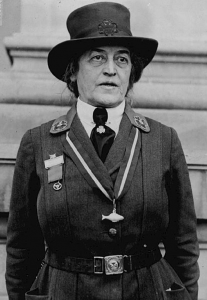
During my time in the Girl Scouts, I can’t say that I did anything that was as life changing as the Girl Scouts of days gone by, but I did enjoy my time as a scout. We learned many skills that earned us badges to wear on our sash, and some of those skills are still things I use today. The camaraderie that I felt as a Girl Scout was amazing. Some of the best friendships of my childhood were formed in those meetings. Those are years I will never forget, and I owe it all to Juliette Gordon Low, and her inspired ideas about what girls could be. Juliette Gordon Low died of breast cancer in 1927, in her Savannah, Georgia home. She was 66 years old. It was her request that she be buried in her Girl Scout uniform, because her years with the Girl Scouts were truly the happiest hears of her life. She also requested that a telegram from the National Board of Girl Scouts of the USA be placed in her pocket. It read, “You are not only the first Girl Scout, you are the best Girl Scout of them all.”
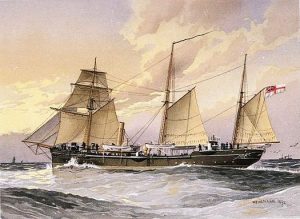 Some wars can last for years and years, while others are relatively short lived, but no war, at least to date, has been as short as the Anglo-Zanzibar War that was fought on August 27, 1896. The war was so short, that it is estimated to have lasted between 38 and 40 minutes…yes, I said minutes. The cause of the war was the sudden and unexplained death of pro-British Sultan Hamad bin Thuwaini, followed by the subsequent succession of Sultan Khalid bin Barghash, who was suspected of killing his uncle in order to take over. The British authorities preferred Hamud bin Muhammed, who was well known for his favorable stance toward British interests. A treaty signed in 1886, called for any candidate for accession to the sultanate, to be approved by the British consul, and Khalid had not fulfilled this requirement. The British considered this an act of war and sent an ultimatum to Khalid demanding that he order his forces to stand down and leave the palace. In response, Khalid called up his palace guard and barricaded himself inside the palace.
Some wars can last for years and years, while others are relatively short lived, but no war, at least to date, has been as short as the Anglo-Zanzibar War that was fought on August 27, 1896. The war was so short, that it is estimated to have lasted between 38 and 40 minutes…yes, I said minutes. The cause of the war was the sudden and unexplained death of pro-British Sultan Hamad bin Thuwaini, followed by the subsequent succession of Sultan Khalid bin Barghash, who was suspected of killing his uncle in order to take over. The British authorities preferred Hamud bin Muhammed, who was well known for his favorable stance toward British interests. A treaty signed in 1886, called for any candidate for accession to the sultanate, to be approved by the British consul, and Khalid had not fulfilled this requirement. The British considered this an act of war and sent an ultimatum to Khalid demanding that he order his forces to stand down and leave the palace. In response, Khalid called up his palace guard and barricaded himself inside the palace.
At 9:00am East Africa Time on 27 August, the ultimatum expired. The British had gathered three cruisers, two gunboats, 150 marines and sailors, and 900 Zanzibaris in the harbor area. The Royal Navy contingent were 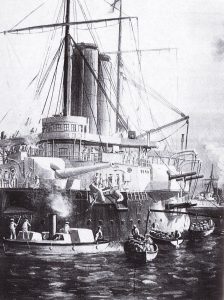 under the command of Rear-Admiral Harry Rawson while their Zanzibaris were commanded by Brigadier-General Lloyd Mathews of the Zanzibar army, who was also the First Minister of Zanzibar. Around 2,800 Zanzibaris defended the palace, most of whom were recruited from the civilian population, but they also included the sultan’s palace guard and several hundred of his servants and slaves. The defenders had several artillery pieces and machine guns, which were set in front of the palace sighted at the British ships. The first bombardment, launched at 9:02am quickly set the palace on fire, disabling the defending artillery. A small naval action took place in the harbor, with the British sinking the Zanzibari royal yacht HHS Glasgow and two smaller vessels. The palace fired some shots ineffectually at the pro-British Zanzibari troops as they approached the palace. The flag at the palace was shot down and fire ceased at 9:40am. It was almost a matter of ready…aim…oh, never mind.
under the command of Rear-Admiral Harry Rawson while their Zanzibaris were commanded by Brigadier-General Lloyd Mathews of the Zanzibar army, who was also the First Minister of Zanzibar. Around 2,800 Zanzibaris defended the palace, most of whom were recruited from the civilian population, but they also included the sultan’s palace guard and several hundred of his servants and slaves. The defenders had several artillery pieces and machine guns, which were set in front of the palace sighted at the British ships. The first bombardment, launched at 9:02am quickly set the palace on fire, disabling the defending artillery. A small naval action took place in the harbor, with the British sinking the Zanzibari royal yacht HHS Glasgow and two smaller vessels. The palace fired some shots ineffectually at the pro-British Zanzibari troops as they approached the palace. The flag at the palace was shot down and fire ceased at 9:40am. It was almost a matter of ready…aim…oh, never mind.
Sultan Khalid bin Barghash’s forces sustained roughly 500 casualties, while the British only had one sailor injured. Sultan Khalid immediately ran to the German consulate, where he was given asylum and then he escaped to German East Africa, located in the mainland part of present day Tanzania. The British quickly placed Sultan Hamud bin Muhammed in power at the head of a puppet government. The war marked the end of the Zanzibar Sultanate as a sovereign state and the start of a period of heavy British influence. The badly damaged palace complex was completely changed by the war. The harem, lighthouse and palace were demolished as the  bombardment had left them unsafe. The palace site was turned into an area of gardens, and a new palace was erected on the site of the harem. The House of Wonders was almost undamaged and would later become the main secretariat for the British governing authorities. During renovation work on the House of Wonders in 1897, a clock tower was added to its frontage to replace the lighthouse lost to the shelling. The wreck of the Glasgow remained in the harbor in front of the palace, where the shallow waters ensured that her masts would remain visible for several years to come, as a reminder of what would happen if the treaty was not followed. In 1912, it was finally broken up for scrap.
bombardment had left them unsafe. The palace site was turned into an area of gardens, and a new palace was erected on the site of the harem. The House of Wonders was almost undamaged and would later become the main secretariat for the British governing authorities. During renovation work on the House of Wonders in 1897, a clock tower was added to its frontage to replace the lighthouse lost to the shelling. The wreck of the Glasgow remained in the harbor in front of the palace, where the shallow waters ensured that her masts would remain visible for several years to come, as a reminder of what would happen if the treaty was not followed. In 1912, it was finally broken up for scrap.
 World War II had dragged on long enough. The Axis of Evil nations didn’t seem to care how many of their own people were killed, as long as victory was theirs…typical of any evil nation. It was time to put a stop to this, and the United States, along with the Allied Nations, could see no other solution to the problem, other than fighting fire with fire…literally. This would be the beginning of a horrible new kind of warfare. I’m sure they didn’t come to that decision lightly. While the Japanese were our enemies, the civilian people didn’t really have much say in what they did. Nevertheless, in a war, sometimes civilians are killed. Collateral damage, they call it. It’s a term for deaths, injuries, or other damage inflicted on an unintended target. In American military terminology, it is used for the incidental killing or wounding of non-combatants or damage to non-combatant property during an attack on a legitimate military target. Knowing that the loss of civilian lives is considered “acceptable” in a war, doesn’t make it easy to live with.
World War II had dragged on long enough. The Axis of Evil nations didn’t seem to care how many of their own people were killed, as long as victory was theirs…typical of any evil nation. It was time to put a stop to this, and the United States, along with the Allied Nations, could see no other solution to the problem, other than fighting fire with fire…literally. This would be the beginning of a horrible new kind of warfare. I’m sure they didn’t come to that decision lightly. While the Japanese were our enemies, the civilian people didn’t really have much say in what they did. Nevertheless, in a war, sometimes civilians are killed. Collateral damage, they call it. It’s a term for deaths, injuries, or other damage inflicted on an unintended target. In American military terminology, it is used for the incidental killing or wounding of non-combatants or damage to non-combatant property during an attack on a legitimate military target. Knowing that the loss of civilian lives is considered “acceptable” in a war, doesn’t make it easy to live with.
The prospect was sickening, but something had to be done. So, on March 10, 1945, 300 American bombers  continue to drop almost 2,000 tons of incendiaries on Tokyo, Japan, in a mission that had begun the previous day. The attack destroyed large portions of the Japanese capital and killed 100,000 civilians. Early in the morning on March 10th, the B-29s dropped their bombs of napalm and magnesium incendiaries over the packed residential districts along the Sumida River in eastern Tokyo. The resulting inferno quickly engulfed Tokyo’s wooden residential structures, and the subsequent firestorm replaced oxygen with lethal gases, superheated the atmosphere, and caused hurricane-like winds that blew a wall of fire across the city. The majority of the 100,000 who perished died from carbon monoxide poisoning and the sudden lack of oxygen, but others died horrible deaths within the firestorm, such as those who attempted to find protection in the Sumida River and were boiled alive, or those who were trampled to death in the rush to escape the burning city. As a result of the attack, 10 square miles of eastern Tokyo were entirely obliterated, and an estimated 250,000 buildings were destroyed. When I think about the loss of life brought on by a complete lack of the Japanese government to surrender when they should have.
continue to drop almost 2,000 tons of incendiaries on Tokyo, Japan, in a mission that had begun the previous day. The attack destroyed large portions of the Japanese capital and killed 100,000 civilians. Early in the morning on March 10th, the B-29s dropped their bombs of napalm and magnesium incendiaries over the packed residential districts along the Sumida River in eastern Tokyo. The resulting inferno quickly engulfed Tokyo’s wooden residential structures, and the subsequent firestorm replaced oxygen with lethal gases, superheated the atmosphere, and caused hurricane-like winds that blew a wall of fire across the city. The majority of the 100,000 who perished died from carbon monoxide poisoning and the sudden lack of oxygen, but others died horrible deaths within the firestorm, such as those who attempted to find protection in the Sumida River and were boiled alive, or those who were trampled to death in the rush to escape the burning city. As a result of the attack, 10 square miles of eastern Tokyo were entirely obliterated, and an estimated 250,000 buildings were destroyed. When I think about the loss of life brought on by a complete lack of the Japanese government to surrender when they should have.

This type of bombing was known as area bombing, and was designed to break Japanese morale and force a surrender. I would imagine that morale was seriously broken after such devastating loss of life and property. The firebombing of Tokyo was the first major firebombing operation of this kind against Japan. Over the next nine days, United States bombers flew similar missions against Nagoya, Osaka, and Kobe. Then in August, United States atomic attacks against Hiroshima and Nagasaki finally forced the Japanese surrender. It was an ugly way to have for fight a war, but the Japanese did not seem to care if their own citizens were sacrificed for their evil cause. All they cared about was winning. Thankfully, they didn’t do that either.

